Between two busy streets in Seattle’s Rainier Valley, an urban oasis hides in plain sight. What looks at first like any overgrown parcel flanked by a handful of houses is actually — when you venture deeper into the woodland — a 1.5-acre green space home to a small creek and a dense copse of big leaf maples, ginkgo trees, crabapple bushes and salmonberry plants.
For thousands of years, Coast Salish people lived and walked on what’s now the Rainier Valley. Maybe even across this very parcel. Then settlers arrived in the region. In the 1930s, the property was turned into a landscaped garden, orchard and tree nursery, and remained so through the 1960s. After the nursery closed, the orchard plantings bolted and went haywire, slowly overtaking the terrain.
Now the land is back under Indigenous stewardship. The yəhaw̓ Indigenous Creatives Collective, a queer and women-led Indigenous nonprofit based in Seattle, has purchased the property for $1.9 million with the intent of creating a permanent home for Indigenous arts and culture in South Seattle. The group was able to purchase the land from the parcel's longtime owners (a local couple) with funding from Seattle’s Equitable Development Initiative and Strategic Investment Fund, two city programs for organizations working on anti-displacement efforts.
yəhaw̓ took ownership on December, 27, 2022. The plan is to use the property for land-based arts and cultural programming — starting this year — such as festivals, canoe-carving events and planting parties, and gardening with art-making materials and ancestral medicines. In the future, the group will build an Indigenous-designed community center with studio spaces for artists, among other amenities.
“It's like this beautiful, against-all-odds sort of thing that has happened,” says Satpreet Kahlon, a co-founder of yəhaw̓.
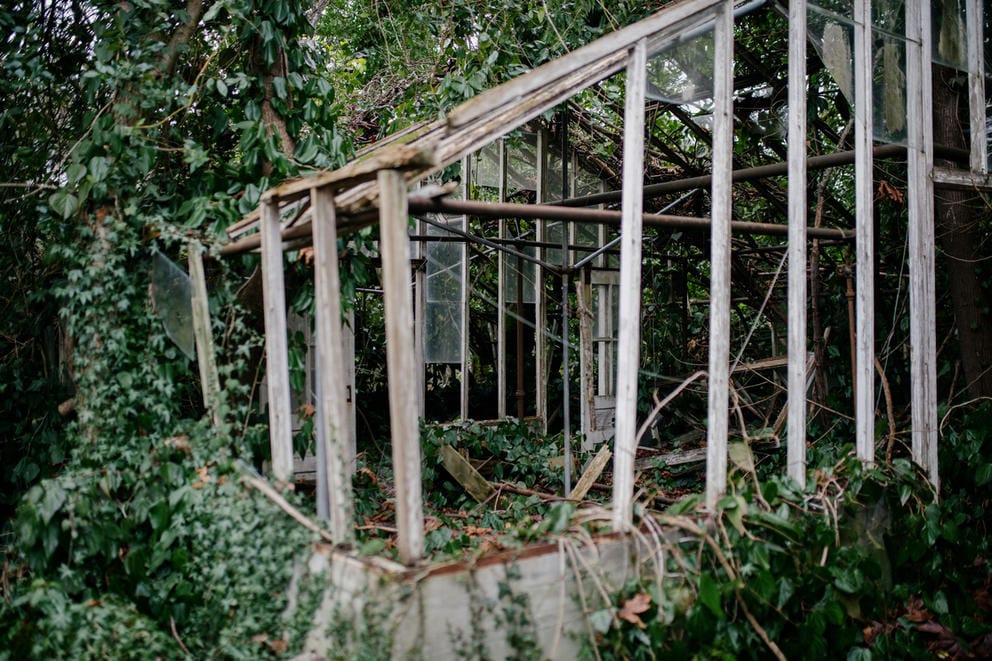
The nonprofit yəhaw̓ has purchased a stretch of land in South Seattle, which once functioned as an orchard but has long since been abandoned. (Grant Hindsley for Crosscut)
Named after the Lushootseed word for “to proceed” or “move forward,” yəhaw̓ was born five years ago as an Indigenous-centered pop-up art project co-founded by local filmmaker/activist Tracy Rector (Seminole/Choctaw), artist/curator Asia Tail (a member of the Cherokee Nation of Oklahoma and a second-generation urban Native) and Kahlon (who was born in Panjab and does not identify as Native American).
In March 2019, the team curated a groundbreaking opening exhibit at the Seattle Office of Arts & Culture’s then-new King Street Station featuring work by more than 200 Indigenous artists. Since then, the group — working from their respective homes across the region and occasional meet-ups at coffee shops and local cultural events — continued to organize pop-ups, community events and workshops both online and IRL across the region. (Rector has since shifted into an advisory role, and local artist and architect Kimberly Deriana joined the group in 2020.)
The desire for a home base was always there but became more urgent during the pandemic, Tail says. “Especially in the uncertainty of the pandemic, these moments where people were really reassessing what they needed and wanted and what was necessary for their own health and well-being, this idea of land and a place to really set down roots locally became more and more important,” she says.
On a recent visit to the property — which sits just north of the Kubota Garden — Tail, Kahlon and Deriana (who is Mandan and Hidatsa) wade through a thicket of brambles and bushes. A clearing appears. Right there, protruding from the forest floor, is a 9-foot-wide brick water basin covered in moss and filled with rainwater and leaves.
“This would be cool for weaving — large-scale weaving,” Deriana says. To process cattail mats or dye certain materials, for example, you need a large bathing area, she explains. “Having this scale of a space to do things like that is really powerful — [especially] in an urban setting.”
In-situ weaving is just one of the many possibilities the team envisions for the space. They plan to clear up the brambles, restore the small creek that runs through the edge of the property and create a trail system surrounded by outdoor art installations.
The parcel is narrow but long, and much of it is woodland. Traversing it is a journey of venturing deeper and deeper into a jumble of big leaf maples, Douglas firs, cherry trees, sword ferns, nettles, thistles, bluegrass and overgrown hazel and laurel hedges. As the sound of cars makes way for birdsong and quiet, it feels like you’ve been transported into a secret wild garden far away from the city.
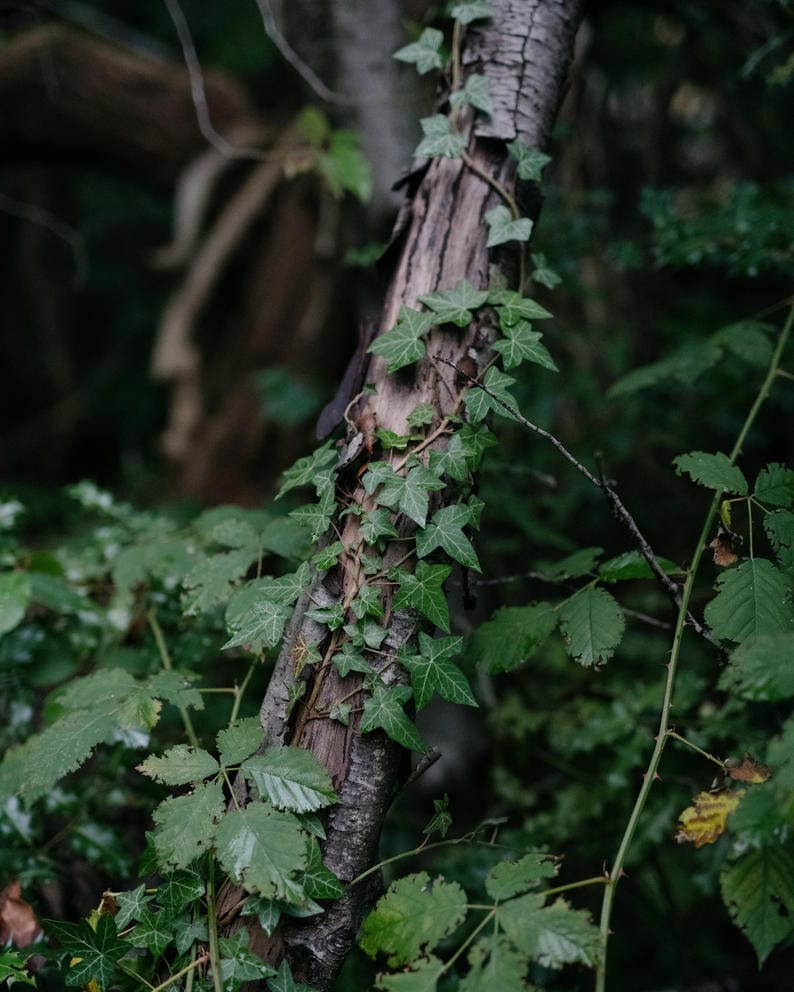
A close look at greenery on yəhaw̓'s land in South Seattle on Friday, Jan. 6, 2022. (Grant Hindsley for Crosscut)
Ideally, the greenhouse — currently a dilapidated jumble of broken glass and wooden beams — could be restored and used to germinate native plants. Until they raise the funds needed for the community center, the front part of the property will be a more undeveloped green gathering place.
In Seattle’s hot real estate market, it is exceedingly rare for an arts nonprofit to be able to buy property — finding rental space is usually enough of a challenge. And maintaining the land as largely undeveloped green space is also highly unusual. Roughly 2% of privately owned land in Seattle remains undeveloped, with another 9% being city-owned parks and other open space, according to the city’s Office of Planning and Community Development.
But that doesn’t mean this parcel won’t be a cultural space. In fact, the yəhaw̓ team wants to offer an alternative to the “white box” of the museum and the exclusionary modes of valuing creative expression in the art world. The question, Kahlon says, became: “How far outside the white box can you go? And it’s like: You don’t actually have to go that far. You just have to go outside.”
Plus, Tail adds, “We wanted space for Native people to connect with actual green space and canopy space and not just move into an office building, but have some transformative outdoor art experiences available to people in the city.”
A new report released by the World Economic Forum, “Embedding Indigenous Knowledge in the Conservation and Restoration of Landscapes,” indicates that Indigenous custodianship has a direct benefit to the environment and may be crucial in a global climate change strategy.
Research has also shown that access to both arts and green space can improve people’s lives by reducing anxiety, stress and depression, Tail points out. “As one of the few Indigenous art-centered nonprofits in our region, we think a lot about the health of Indigenous peoples and how art is a powerful tool for wellness and the reconnection with ancestors and community,” Tail continues. “[We see] the same health benefits in access to green space, particularly for Indigenous peoples, but also for BIPOC peoples more broadly.”
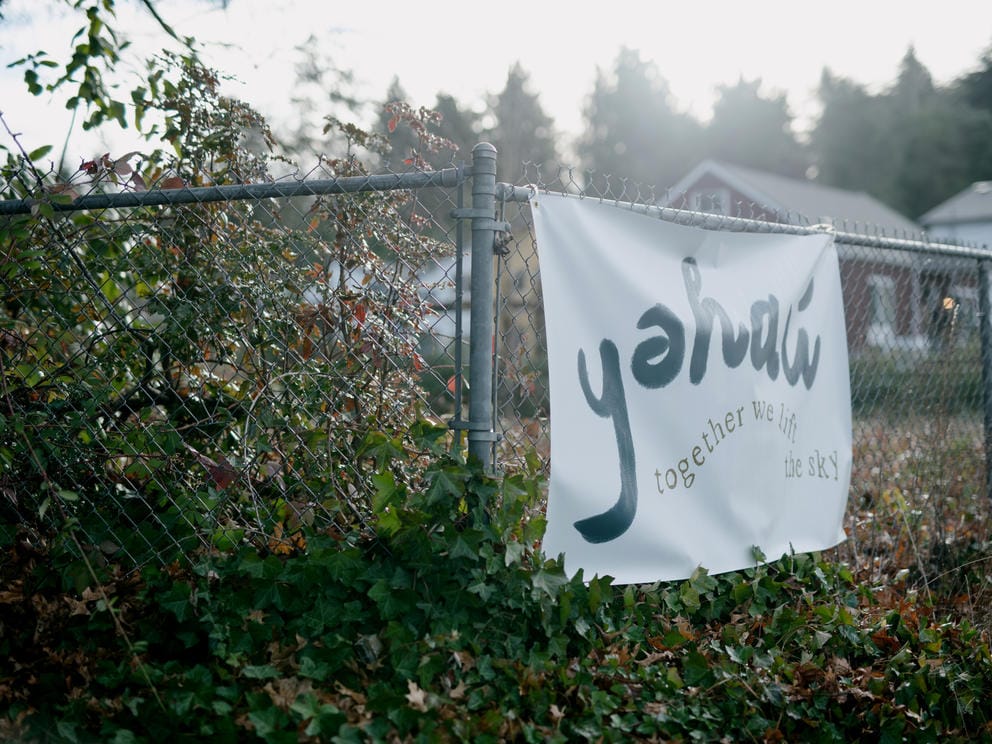
Named after the Lushootseed word for “to proceed” or “move forward,” yəhaw̓ was born five years ago as an Indigenous-centered pop-up art project, and is now putting down roots in Seattle's Rainier Valley. (Grant Hindsley for Crosscut)
According to the City of Seattle’s Cultural Space Inventory of 2015, only 6% of the city’s cultural spaces at that time reflected and served communities of color, which then made up roughly 30% of Seattle’s population.
“This yəhaw̓ acquisition directly moves that needle,” wrote Matthew Richter, Seattle’s former Cultural Spaces Liaison and current interim executive director of Seattle’s Cultural Space Agency (CSA), in an email. “I haven't been in a meeting for the past decade that didn't start with a statement of contrition about the stolen land on which we've continued to build America's Fastest Growing City™,” he added. “And in that decade, with the very notable exception of Chief Seattle Club, the Indigenous arts community in Seattle has been unable to rematriate any of that stolen land. This project brings land back to its rightful owners.”
Data show that Indigenous people in the United States have lost nearly 99% of the land they historically occupied before the start of colonization. Today, across the United States, 2.5% of the land is owned by tribal nations. While the “land back” — an Indigenous-led movement to reclaim lands and spaces — has made some headway in the mainstream consciousness, progress is slow.
In the Northwest, notable projects include The Chief Seattle Club, which has launched a project to reclaim land by growing traditional foods and Indigenous plants and has opened its own gallery-meets-restaurant, ʔálʔal. In the Wenatchee area, designer Mary Big Bull-Lewis is working toward purchasing land to build a community center for Indigenous people.
There’s also the Hibulb Cultural Center, which sits on a 50-acre natural preserve north of Everett, owned by the Tulalip Tribes and the cultural center Daybreak Star, which is perched on 20 acres of land in Discovery Park that the nonprofit of the same name leases (on a renewable 99-year lease). But yəhaw̓ wanted to offer space for urban Native people in South Seattle.
“It's really amazing that tribes and organizations are getting 100-acre, 500-acre parcels in rural areas. But we felt that there was a gap: We serve urban Indigenous people,” Kahlon says. “And there isn't a lot of space in urban spaces for people to connect cross-tribally, especially thinking about the global Indigenous community, which is what we're focused on.”
According to a recent survey by the Na’ah Illahee Fund, which is working on envisioning a Native neighborhood in Seattle, many Native people who grew up in the city don’t know where to go to connect with other urban Native people.
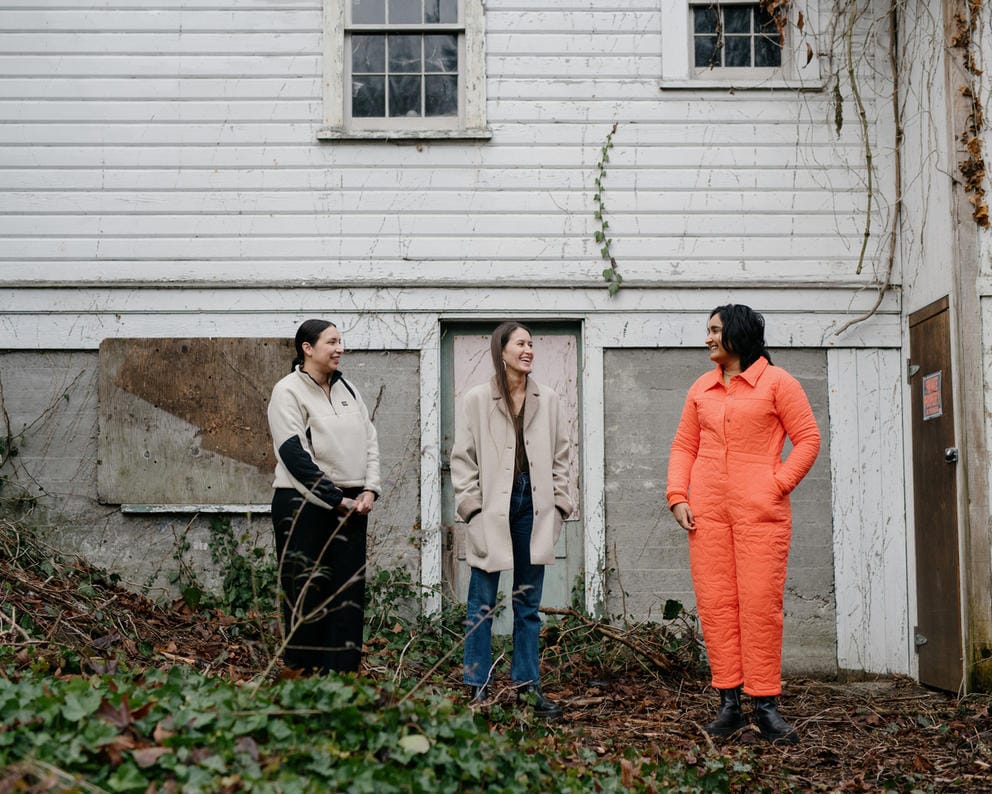
Yəhaw̓ organizers Kimberly Deriana, Asia Tail and Satpreet Kahlon lead a tour of the Indigenous art organization’s newly purchased land in South Seattle on Friday, Jan. 6, 2022. (Grant Hindsley for Crosscut)
Tail places yəhaw̓ in a much longer tradition of urban Native movements, like the one 50 years ago that led to the creation of Daybreak Star, and the broader land rematriation movement happening now. “We’re part of this much bigger momentum that’s happening, that’s bigger than us,” Tail says. “If we get to be … a small drop in that river, it feels really important for many generations to come.”
That’s why the group is making sure to not rush into things, they say: “It is about building a relationship with the land first, and allowing it to tell us what it needs and what it wants,” Tail says.
Tail recalls how she brought one of the young artists Yəhaw̓ works with to the purchased land the other day. “I was asking them what kind of feeling they got from the parcel,” she says. “I think they wanted to sit with it for longer, but [they said] ‘Wow, the greenhouse is so romantic. Why don't you take all the TikToks here?’” she says, laughing.
Before they can get started on rehabbing the greenhouse — and the rest of the property — the nonprofit has its work cut out for it: from clearing stubborn brambles and other invasive species to fundraising, hiring staff, consulting with local tribes, ecologists and traditional knowledge-bearers about the land and creek restoration, and maybe even buying the adjacent property, where old barns could be renovated into residency spaces for artists.
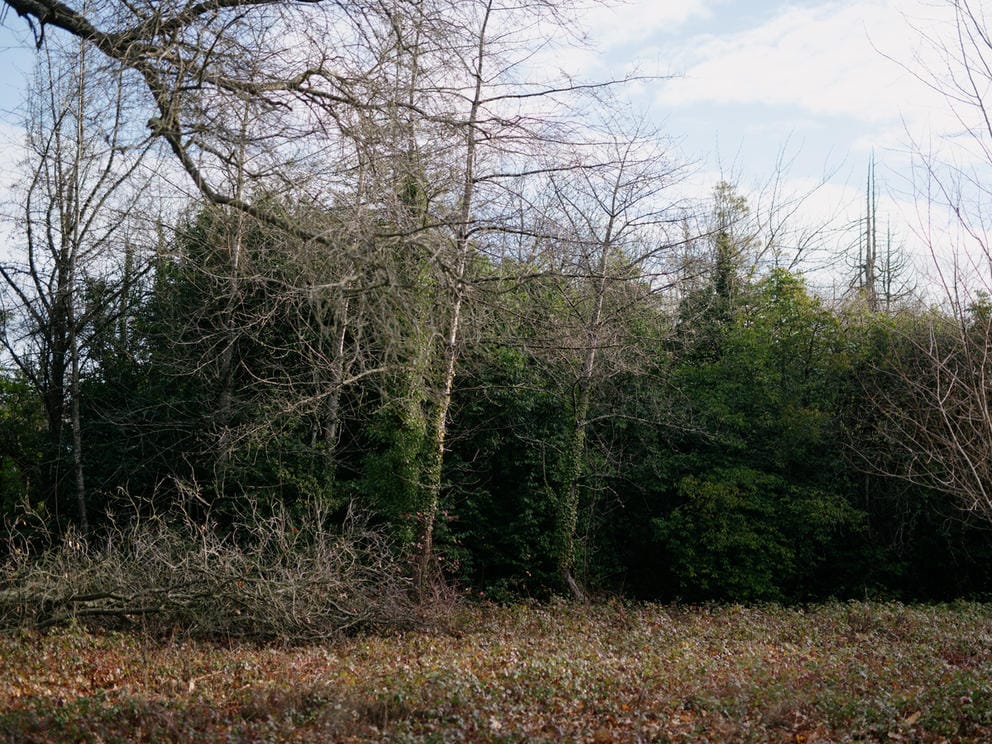
yəhaw̓’s newly purchased woodland in South Seattle offers a reprieve from the city. (Grant Hindsley for Crosscut)
In the short term, the team says they’ll start activating the property with art this year. One artist has already offered to start a “little free bead library.” The long fence bordering the property could become a canvas for art banners. Maybe local carvers could transform fallen trees on the site.
As we walk past the greenhouse and a mid-century station wagon that looks like it may have moss growing on top of it, we come to a small path covered in mulch and leaves at the edge of the property. “I think it’s easy to take for granted the connection between Indigenous peoples and the land,” Tail says. “But that idea can also be alienating for people who have been removed from their homelands.”
Tail speaks from personal experience. As a second-generation urban Native person, Tail grew up in Tacoma — far removed from Cherokee territories and without access to cultural practices and traditions like weaving or working with plants. For a long time, she felt she wasn’t “Native enough.”
“Now that I'm older and have an opportunity to be part of stewarding this site for communal gathering, it's really important to me that people know they're welcome here, wherever they are on their personal journeys of reconnection, and that this will be a place where there are very accessible workshops to learn those kinds of cultural practices,” she says. “But it's also OK to come and sit and listen to the creek and to drop by and pick up some beads or to connect in whatever way each individual decides is right for them.”
“Even if that means having a dance party,” Kahlon adds.
Tail smiles. “TikTok challenges welcome.”



